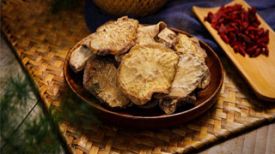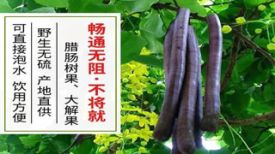Chinese medicine names: jujube, jujube gum, jujube bark, jujube flower
Nicknames: Silver Willow and Red Bean (from the Chinese Higher Plants Atlas). Sha Zao (Gansu) Qi Li Xiang (List of Hedonic Chinese Plants), Xiang Liu, Ci Liu, Gui Xiang Liu (Henan), Yin Liu (Xiongyue, Liaoning), Yin Liu Hu Ju Zi (Northeast Woody Plant Atlas), Ya Ge Da, Hong Dou, then given to Mao Dao (Mongolian name), given to Jie Ge Dai (renamed). Siweiguo, Jigeda. Golden bell flower, sand jujube tree, young willow Narrow leaved jujube, sand jujube, chicken brother generation, ten mile fragrance, narrow leaved Elaeagnus.
Form: Deciduous shrub or small tree, 5-10 meters tall, sometimes with thorns. Young branches are silver white, while old branches are chestnut brown. The leaves are rectangular, lanceolate to narrowly lanceolate, 4-8 centimeters long, with a pointed or blunt apex, a wide wedge-shaped base, and white scales on both sides. The lower part is dense and appears silver white, with inconspicuous lateral chants; The petiole is 5-8 millimeters long. The flowers are silver white, fragrant, with scales on the outer side, and 1-3 small branches in the lower leaf axils; The perianth tube is bell shaped. 5 millimeters long, 4-lobed at the upper end, with triangular lobes; Stamens 4; The upper part of the style is twisted, and the base is covered by a cylindrical disk. The fruit is oblong or nearly circular in shape, with a diameter of 8-11 millimeters and densely covered with silver white scales. The flowering period is from June to July. The fruiting period is from August to October.
Family and genus: Elaeagnaceae and Elaeagnaceae
Distribution: Born in desert areas, resistant to drought and cold, and widely cultivated in sandy and saline soils, as well as in villages and fields. Distributed in North China, Northwest China, Liaoning and other areas.
Collection: When the fruits are ripe, they are picked in batches, fresh or dried. Remove the juice from the stems and branches and dry them in the sun for later use. Harvest endothelial cells in spring, summer, and autumn.
Meridian return: Fruits go to the lung, liver, stomach, and kidney meridians, gum juice go to the kidney meridians, bark and root bark go to the heart, liver, and spleen meridians, flowers go to the lung meridians.
Sexual and flavor effects: Fruits: sour, slightly sweet, and cool in nature. It has the effects of nourishing the liver and kidney, strengthening the spleen and regulating menstruation. Commonly used for liver deficiency, dizziness, kidney deficiency, lower back pain, spleen deficiency, diarrhea, indigestion, vaginal discharge, and menstrual disorders.
Gelatin juice: astringent and slightly bitter in taste, with a mild nature. It has the effect of connecting bones and tendons, promoting blood circulation and relieving pain. Commonly used for fractures.
Bark and root bark: astringent, slightly bitter, and cool in nature. It has the effects of clearing heat, relieving cough, diuresis, relieving pain, detoxification, and hemostasis. Commonly used for chronic bronchitis, stomach pain, enteritis, acute and chronic nephritis, jaundice hepatitis, vaginal discharge, burns, and traumatic bleeding.
Flower: Sweet and astringent in taste, warm in nature. It has the effect of relieving cough and asthma. Commonly used for persistent coughing and wheezing.
Usage and Dosage: Fruits taken orally: Decoction, 15-30g.
Intradermal administration: decoction, 9-15g. External use: In moderation, apply with pan sauce; Or grind and sprinkle.
Flower oral administration: decoction, 3-6g; Or into pills or powder.
Application:
1、 Fruit
1. To treat kidney deficiency and lower back pain, do not reverse: Take an appropriate amount of Siwei fruit and cook it with dog kidneys once a day. (Yao Kecheng's "Food Materia Medica")
2. Treatment for indigestion, stomach pain, enteritis and dysentery: 15-30g of jujube. Boiled in water. (Food, Traditional Chinese Medicine, and Stool Formula)
Various discussions:
1. The Compendium: "It can stop hunger and thirst."
2. "Inner Mongolia Chinese Herbal Medicine": "Strong, regulating menstruation and promoting blood circulation, calming, strengthening the stomach and spleen, and stopping diarrhea."
3. Medicinal Plants in Desert Areas: "Anti diarrheal and sedative."
4. National Compilation of Chinese Herbal Medicine: "Treating indigestion."
5. Food Traditional Chinese Medicine and Stool Formula: "Strengthening the Spleen and Stopping Diarrhea."
6. "Handbook of Traditional Chinese Medicine in Xinjiang": "Strong, calming, consolidating essence, strengthening stomach, stopping diarrhea, regulating menstruation, diuresis. Treat stomach pain, diarrhea, physical weakness, lung heat and cough."
pharmacological action
The concentrate of pectin and tannin obtained from fruits has anti-inflammatory effects; For animals that artificially cause diarrhea, it can inhibit the motility of the small intestine, so it can be used for enteritis.
2、 Gum juice exuding from stems and branches (jujube gum)
Treatment for fractures: 9g of madder grass, 12g of mandala seed, 21g of jujube gum, 30g of magnesium sulfate, and 9g of alum. Mix fine powder together and apply egg white to the affected area. (Handbook of Traditional Chinese Medicine in Xinjiang)
3、 Bark and root bark
1. Treatment of vaginal discharge: ① 2 parts of jujube bark (endothelium), 3 parts of lock yang, finely ground. Take 9g each time, twice a day. (Medicinal Plants in Desert Regions) ② Five coins of jujube bark. Boiled in water. (Selected Chinese Herbs from Shaanxi Gansu Ningxia Qing)
2. Treatment of burns: ① Apply an appropriate amount of jujube bark to the affected area in a 1:1 infusion of 75% ethanol. (Xinjiang Chinese Herbal Medicine) ② 120g of jujube bark and 30g of phellodendron bark. Add 1500ml of water, fry until 300ml, filter. Spray or wet compress the wound with medication solution. 1-2 times daily. (National Compilation of Chinese Herbal Medicine) ③ Sand jujube bark powder, soak in 80% alcohol for 48 hours, filter, and spray on the wound surface when used. Can stop exudate and promote wound healing. (Selected Chinese Herbs from Shaanxi Gansu Ningxia Qing)
3. Treatment of traumatic bleeding: Grind the bark of jujube trees and apply it to the affected area. (Selected Chinese Herbs from Shaanxi Gansu Ningxia Qing)
4. Treatment for jaundice type hepatitis: 9g of jujube bark, 6g of gentian grass, 12g of cypress, 15g of Artemisia scoparia and Plantago asiatica each. Boiled in water. (Chinese Herbal Medicine in Xinjiang)
5. Treatment of acute nephritis: 3g of jujube tree bark (finely ground), 1.5g of prickly cypress and soil yellow coptis powder each. Take three doses of hot water on the first day, two doses on the second day, and one dose daily after three days. Avoid eating fish or spicy food. (Chinese Herbal Medicine in Xinjiang)
pharmacological action
1. Anti myocardial ischemic effect;
2. Anti arrhythmic effects.
Related discourse
"The taste is astringent, slightly bitter, and the nature is cool."
"Bitter, astringent, and smooth."
3. "National Compilation of Chinese Herbal Medicine": "Sour, slightly bitter, cool."
4. "Selected Chinese Herbs from Shaanxi Gansu Ningxia Qing": "astringent and pain relieving, clearing heat and cooling blood. Indicating for burns, vaginal discharge, external use for hemostasis."
4、 Flowers
Treatment of chronic bronchitis: 6g dried jujube flower (honey roasted) (9-15g fresh). Boil in water twice a day. Or 30g of jujube flowers (honey roasted), 9g of white mustard seeds, almonds (peeled and honey roasted), and 9g of front beard each, and 3g of licorice. Study the details together. Take 9g each time, 2-3 times a day. (Medicinal Plants in Desert Regions)
Related discourse
1. "Medicinal Plants in Desert Regions": "Sweet and astringent in taste, warm in nature."
2. Medicinal Plants in Desert Regions: "Cough relieving and asthma relieving."
3. "Xinjiang Medicinal Plant Chronicle": "Fruit branches, leaves, and flowers can treat burns, vaginal discharge, chronic bronchitis, closed fractures, indigestion, neurasthenia, enteritis, and heart disease."
Chinese Medicine - Shazao
Release time:2024-06-08 20:19:18
Reading:218
Word Count:8074
Subscribe to email


